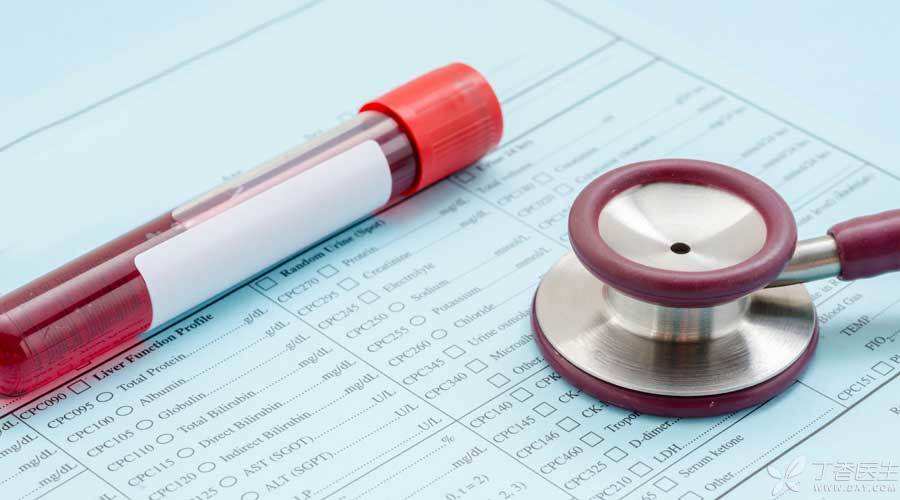
Among the indexes of [liver function] examination, the most familiar one is [transaminase].
The transaminase is high. It seems that there is something wrong with the liver.
Not bad, transaminase is normal.
Many people will judge their liver condition by looking at transaminase level. However, in actual clinical practice, the significance of this indicator is not so simple.
Transaminase is what?
Transaminase is the general name of a series of enzymes, mainly including alanine aminotransferase (ALT), aspartate aminotransferase (AST), alkaline phosphatase, glutamyltransferase and lactate dehydrogenase. The content of transaminase in various organs is roughly as follows:
- ALT: Liver > Kidney > Heart > Muscle AST: Heart > Liver > Muscle > Kidney
The lower limit of each transaminase index is zero, so there will be no low transaminase, only high transaminase.
Under normal circumstances, transaminase will exist in liver cells. When some cells of the liver are damaged due to bacterial and viral infection, or due to poisoning, alcohol abuse, fat metabolism disorders and other reasons, the permeability of cell membrane will be enhanced, and transaminase in cells will be released into blood, causing an increase in serum transaminase.
In daily work, I often meet some patients with laboratory tests and ask:
Doctor, is there nothing wrong with my liver when transaminase is normal?
My transaminase is both high, is there fatty liver?
After six months of abstinence from alcohol, the liver function index is normal. Can I drink more?
… …
In fact, transaminase is only an index commonly used in clinic to detect liver function, and its level has no parallel relationship with liver function status. The level of transaminase cannot be simply equated with the status of liver function.
The following doctor clove will elaborate on the relationship between transaminase and the three major liver diseases.

Transaminase and Fatty Liver
Fatty liver is often related to improper diet structure, overeating, excessive drinking and lack of exercise.
The transaminase level of fatty liver can be normal or slightly increased.
This kind of patients should first change unreasonable eating habits, stop drinking, live regularly, and strengthen physical exercise at the same time. After about half a year, the liver function index can be reexamined to judge the recovery of the liver in time.
Transaminase and Viral Hepatitis
A, B, C, D, E, the active phase of these five viral hepatitis, can cause the increase of transaminase.
For viral hepatitis, the most specific indicator is the gene diagnosis of the virus (i.e. Quantitative DNA detection of the virus).
Transaminase can be used as an index to judge the progress of viral hepatitis. As mentioned earlier, liver cell injury releases transaminase, which will increase transaminase in blood. However, some patients with severe hepatitis, due to a large number of necrosis of liver cells, may have transaminase loss and decrease.
During treatment, doctors will make a comprehensive judgment and specify a treatment plan according to the level of transaminase and the activity of the virus. Not to say that transaminase is normal, it can not be treated.
Transaminase and Hepatocellular Carcinoma
Histopathological examination of liver tissue is also the most reliable method to diagnose liver cancer.
However, transaminase and alpha-fetoprotein (AFP) indexes will play a role in assisting diagnosis.
Patients with liver cancer often show slight elevation or even normal transaminase. At this time, special attention should be paid to another important indicator-alpha-fetoprotein (AFP), which is positive in more than half of patients with liver cancer.
What about transaminase elevation?
In addition to the disease of the liver itself, Drugs are also a major cause of transaminase elevation, Drug-induced hepatitis can occur in healthy people without a history of liver diseases. Improper medication of the original liver diseases can also easily induce liver damage and cause elevated transaminase. At the same time, strenuous exercise, overwork, drinking, greasy diet, irregular work and rest, and even anger may also cause elevated transaminase.
When transaminase elevation is found, patients should pay attention to five taboos in life:
- Avoid alcohol, tobacco, drug abuse, indiscriminate use of supplements, greasy diet and irregular sleep.
Patients diagnosed with liver diseases should see a doctor in time and be followed up regularly. Generally, liver function should be reviewed half a month, one month and three months after medication, so as to cooperate with doctors to rationally adjust medication.
In daily life, we should ensure reasonable nutrition, regular life and proper exercise.

Through the above introduction, I hope everyone has a more accurate understanding of transaminase-transaminase level and liver function abnormality are not mutually causal.
On the one hand, not all liver function abnormalities will be manifested as elevated transaminase; On the other hand, transaminase is not only found in the liver, but also in the heart and muscles. Lesions in these parts may also cause the increase of transaminase.
Transaminase is only a commonly used indicator to monitor liver function. The simple increase of transaminase is not a reliable indicator to indicate whether the liver is pathological. It is necessary to further confirm liver diseases in combination with other examinations.
